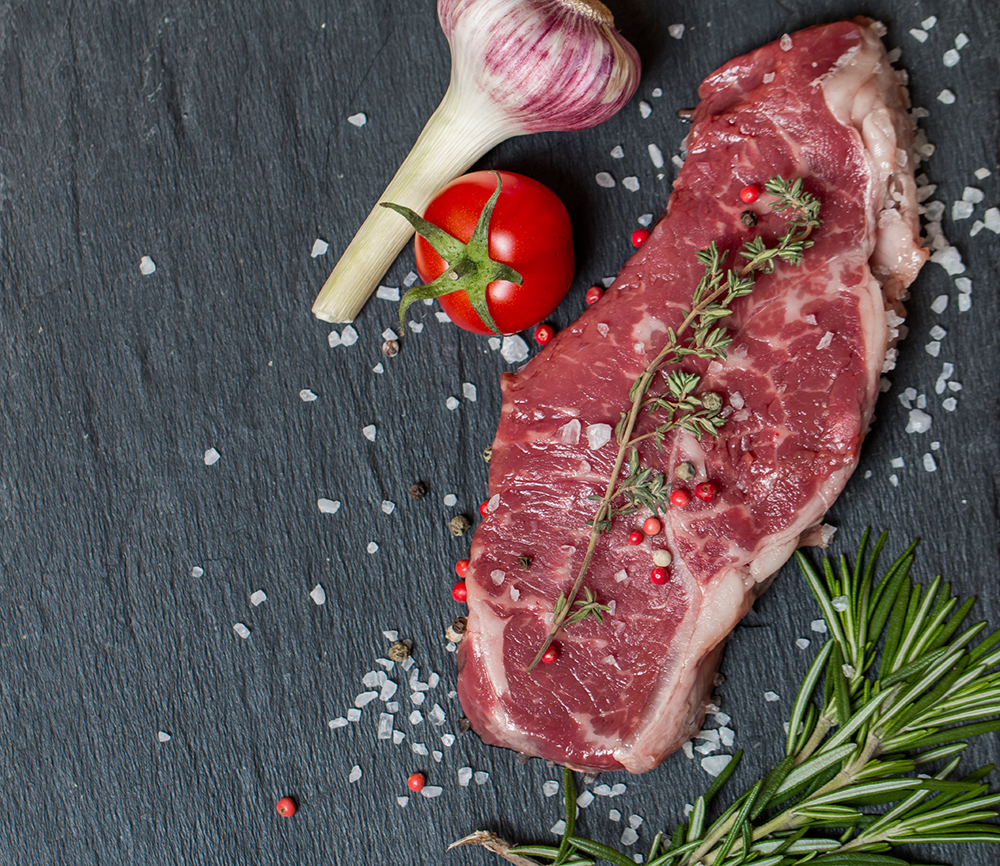
THE FRENCH
FOOD
INDUSTRY'S PORTAL
Webzine
taste it to info

Quality and variety in French beef
News /
Friday 12 June 2015
French beef, on the whole, is known for its leanness and flavor. Many different breeds of cattle are bred in France for mass consumption, with the best meriting a quality assurance “Label Rouge” or red label in France.
Limousin Beef
Limousin cattle is a very old breed that some say may have descended from the cattle depicted in the 20,000 year old paintings on the walls of the Lascaux caves. Limousin cattle are sturdy and muscled, producing beef of high quality with a low proportion of bone and fat.
In France, Limousin beef is sometimes known as the “butcher’s animal.” Consistent in its tenderness and juiciness but particularly its leanness, Limousin beef tends to be more than 95% fat free while remaining quite flavorful, as opposed to many other varieties of lean beef. However, Limousin cattle are also often bred with other varieties like Angus, Hereford and Shorthorn to create crossbreeds with more fat and marbling.
Worldwide demand for top-quality beef in Europe, the United States and even Zimbabwe has gained Limousin beef international recognition.

Charolais Beef
Charolais cattle belongs to an old breed dating back as early as 878 A.D. An integral part of the Burgundian landscape, Charolais beef is the choice variety used in classic regional dishes like Boeuf Bourguignon.
True Charolais beef has benefitted from an AOC certification since 2010. Beef bearing the Boeuf de Charolles label lays claim to this terroir. The beef is marbled, juicy and flavorful without being overly fatty. It has a nutty aroma and a subtly gamey flavor. Charolais is naturally lean and is therefore occasionally crossed with Angus or Hereford cattle for crossbreeds that offer a higher fat content.

Blonde d’Aquitaine Beef
Blonde d’Aquitaine is the second most popular breed in France. Formerly bred as draft animals, today, Blonde d’Aquitaine cattle are bred for their lean meat. The intramuscular fat of these cattle allows the beef to be very flavorful as well. The meat can be fibrous and is therefore generally best prepared blue or rare.
Blonde d’Aquitaine’s popularity worldwide is partially due to the lack of expense for raising. The hardy cattle requires little intervention, and their calving ease means that 98% of calf births in France are unassisted.

Salers Beef
Salers originates in Cantal, in the Massif Central of France. The large animal was originally a work breed, though today it is used for milk and meat.
Salers beef is recognized amongst butchers for its flavor and color: Salers beef tends to be drier and redder than that of other French cattle and has the most marbling of any French breed, making Salers some of the best beef for a simple pan-fried steak. It has a firm, chewy, dense texture and a strong, pronounced flavor.

Aubrac Beef
Aubrac cattle is a very old French breed now making headway on an international scale. Widespread interest in Aubrac beef began in the early 21st century, in parallel with an interested in grass-fed beef. The disease-resistant cattle’s hardiness makes it a particularly good choice for grass-fed farming, producing flavorful, tender meat with some marbling that has long been renowned in France.

Gascon Beef
Gascon cattle demonstrate particular hardiness, in part due to their origins in the French Pyrenees. The weather constraints of the region have made Gascon cattle particularly well accustomed to seasonal climate changes. In France, Gascon beef is very famous, with a fraternity devoted entirely to the “pure breed, pure taste” of Gascon beef. Gascon cattle are generally grass fed, which contributes to production of healthy meat that boasts a good proportion of Omega 3 and 6 fatty acids, not to mention juiciness and flavor.






